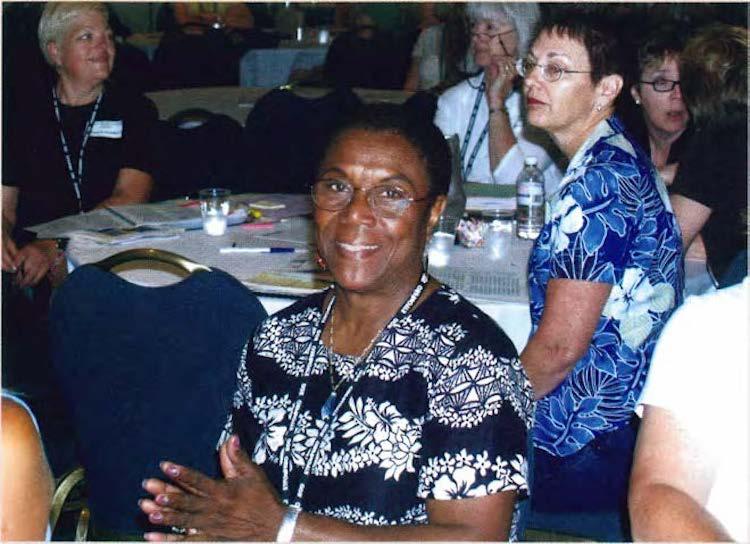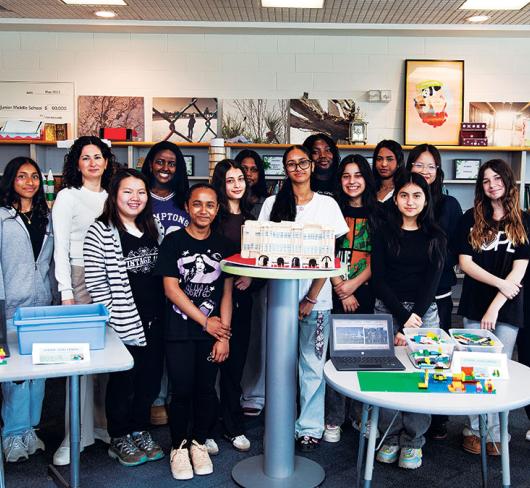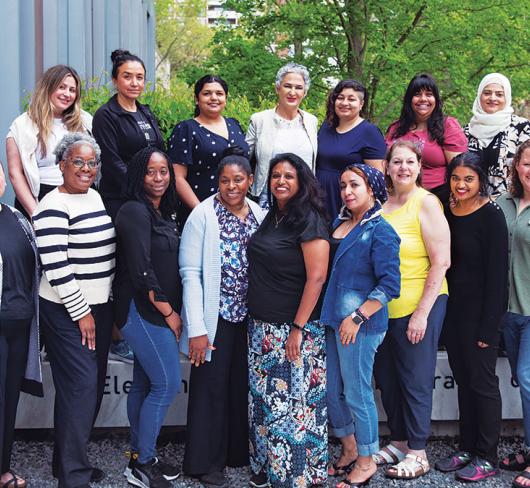
ETFO's Women's Programs: Building a Stronger Federation
How do you demonstrate the power of language to students weaned on a diet of dramatic and engaging visuals? I have them close their eyes and picture an image to accompany the famous words of British poet, Robert Browning: "A man’s reach should exceed his grasp, or what’s a heaven for?”
Often repeated as an encouragement for people to strive beyond what seems possible, the words almost always inspire visions of a guy in a suit climbing a corporate ladder, or of Michelangelo’s Adam reaching out to God on the ceiling of the Sistine Chapel. Rarely does anyone picture a woman.
This shouldn't be surprising. Research has found that we tend to be quite literal in response to language. When we hear specific words like “statesman” or “mankind”, the visual reference created in our minds is invariably male.1
Words are both a cause of inadvertent gender- based assumptions, and symptoms of a much larger cultural and historical context. In this case, the context includes centuries of men wielding power, passing laws, and making decisions that governed every aspect of women’s lives: who they married, whether they were educated, and what control, if any, they had over their bodies.
Much progress has been made over the past hundred years. Many women’s lives today - as principals, union leaders, politicians and CEOs - would be unrecognizable to our 19th century sisters.
Yet, despite the gains, remnants of entrenched and naturalized power relations remain. Men’s conversational style and managerial approach are still seen as normative - the standard by which women are measured and so often found wanting.
Educators have greater opportunities than most to help change this. Well-known linguist Deborah Tannen has documented the way in which gender socialization in childhood continues to play out in adult communication styles. While many boys learn to speak up with authority and promote their status, girls are still more often encouraged to ask questions, build consensus, and defer to others.2
One result of this continues to be that journalists seeking to provide gender balance in their stories find that their male contacts are willing to comment on issues even outside their particular area of expertise. In contrast, women often decline to be interviewed even when they are certified experts on a topic. This predictably limits their profile and opportunities.
Elementary students see women in positions of authority every day. (Indeed, women dominate ETFO in numbers - if not in political leadership - precisely because the teaching of young children has traditionally been seen as easier, less important - indeed, less valuable - than the teaching of older students and adults.)
But this role modeling is countered many times over by other messages. In the reading of news and movie trailers alike, masculine tone and timbre constitutes “the voice of authority”. And newsmakers - disproportionately politicians and business executives - are also overwhelmingly male. Indeed, research has found that a woman is more likely to make the news as the victim of a crime than in any other capacity.3
When women do make the front page, it’s often as much because of their physical appearance - their status as a model or actor - than for any other reason. How they are depicted is also influenced by unconscious sexism. Female athletes, musicians, and politicians all are more likely to be described in terms of their clothing, appearance, or relationships than their male counterparts.
Clearly, even with enormous progress and special programs within institutions, inequities remain. And womens lives will always be affected by circumstances - such as pregnancy, childbirth, and breast-feeding - that dont affect men. Women also remain the primary caregivers for both children and aging parents. They put in more hours at home than male colleagues. And they are more likely to have interrupted work histories or to work part-time. Their power - financial and otherwise - suffers accordingly.
Here in Canada, home of a politically progressive culture, only 21 per cent of our members of parliament are female, placing us a dismal 33rd among nations around the world.
The complex barriers that give rise to such numbers exist in virtually every institution, including ETFO. Although men make up a minority of ETFO members, they are empowered in a way that many of their female colleagues are not. At ETFO meetings women are less likely than men to ask questions from the floor, to move or second a motion, to raise a point of order, or to run for office.4
As a result, male ETFO members hold a disproportionate number of leadership positions. The allocation of six per cent of the organization s budget for special programs, training and resources for women and other equity seeking groups has in no way limited their opportunities. Without such programs, the imbalance would likely be even more dramatic.
ETFO joins many other labour organizations in allocating funds for progressive equity work. Even the profit-driven private sector recognizes that economic prosperity is dependent on enhancing equity. Corporations of all sizes are now investing in measures to increase their organizational effectiveness by integrating the unique perspectives and skills of the entire talent pool, including all traditionally disenfranchised groups: women, minorities, aboriginal peoples, people with disabilities, and those who are lesbian, gay, bi-sexual, and transgender.5
Edmund Burke once wrote: “The only thing necessary for the triumph of evil is for good men to do nothing.” By designating a small portion of its budget to equity programs, ETFO demonstrates its awareness that “good women” need to be included in leadership positions at all levels.
We all look forward to the day when “womens programs” are no longer necessary - when society has achieved not just legislative equality, but substantive equity that effectively supports members of all disadvantaged groups in participating fully and actively despite the obstacles.
In the meantime, ETFO has an opportunity to continue leading the way, to “reach beyond [its] grasp”: To challenge inequities, to change attitudes, and to empower the girls and boys, women and men, who are touched by what you do, every day.
Resources:
- Parks, Janet B. and Mary Ann Robertson. Development and Validation of an Instrument to Measure Attitudes Toward Sexist/Nonsexist Language, Sex Roles: A Journal of Research, March 2000.
- Tannen, Deborrah. Talking from 9 to 5- Women and Men in the Workplace: Language, Sex and Power, Avon Books, 1995; and Gilligan, Carol. In a Different Voice - Psychological Theory and Women's Development, Harvard University Press, 1982.
- MediaWatch, Global Media Monitoring Project - Women's Participation in the News, 1995.
- ETFO Equity and Women's Services Report to the Annual General Meeting, 2004, pp. 14-15.
- Lockwood, Nancy R. Workplace diversity: leveraging the power of difference for competitive advantage, HR Magazine, June 2005.

